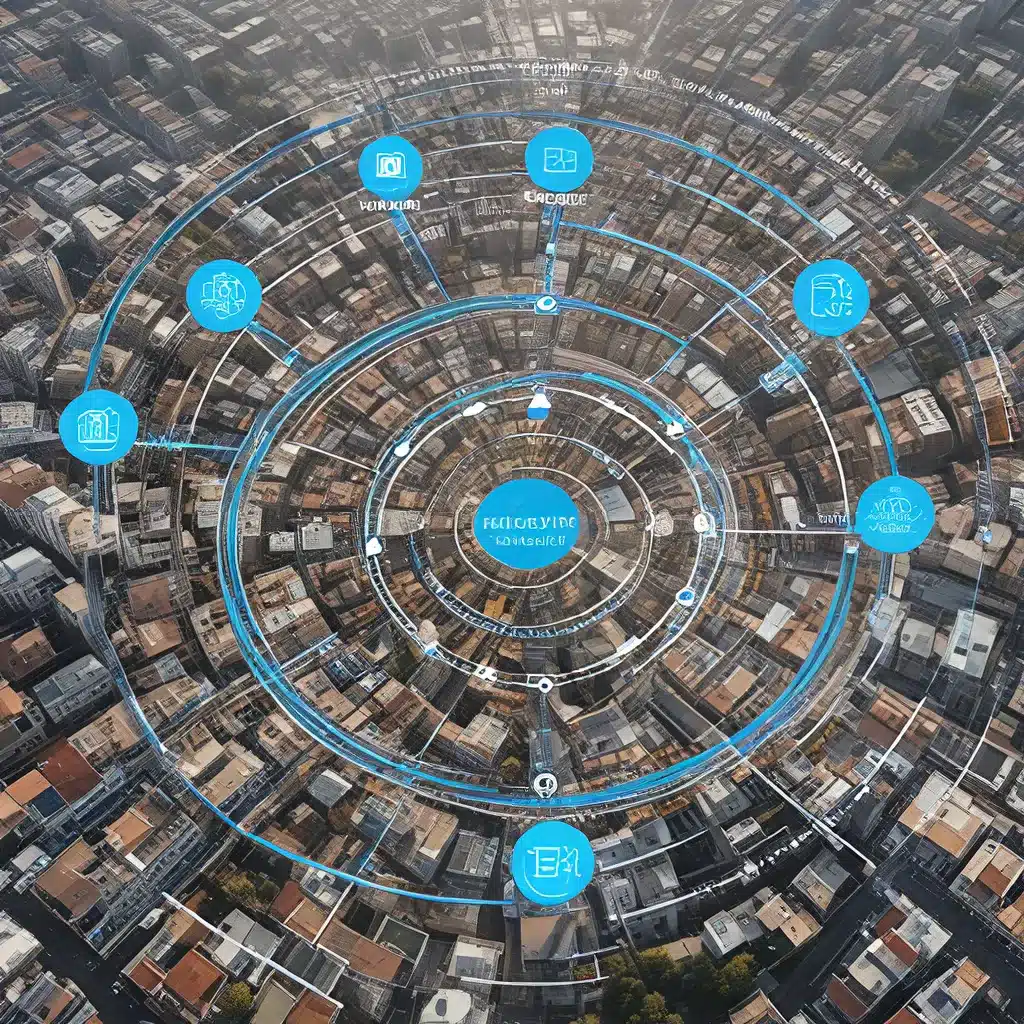
The Power of Sensor Networks in IoT
The rapid advancements in sensor technology and the Internet of Things (IoT) have significantly transformed how we collect, analyze, and apply data across a wide range of industries. Sensor networks, the backbone of IoT ecosystems, have become the driving force behind a data-driven revolution, enabling the extraction of valuable insights that were previously inaccessible.
At the heart of this transformation lies the concept of sensor-driven predictive analytics. By strategically deploying a network of interconnected sensors, organizations can now gather real-time data from the physical world, analyze it using sophisticated algorithms, and uncover hidden patterns, trends, and anomalies. This powerful combination of sensors and analytics has the potential to revolutionize decision-making, optimize operations, and unlock new opportunities in IoT environments.
Designing Robust Sensor Networks
Effective sensor network design is crucial for leveraging the full potential of predictive analytics in IoT. Key considerations in sensor network architecture include:
Topology and Connectivity
The topology of a sensor network, such as star, mesh, or hierarchical layouts, can significantly impact its performance, resilience, and scalability. Each topology offers unique advantages in terms of data routing, energy efficiency, and fault tolerance. Selecting the right topology based on the specific requirements of the IoT application is essential.
Sensor networks must also ensure reliable connectivity between sensors and the central data processing system, leveraging a range of communication technologies, including Wi-Fi, Bluetooth, Zigbee, and cellular networks.
Sensor Selection and Placement
The selection of appropriate sensor types and their strategic placement within the environment are critical factors in sensor network design. Factors such as environmental conditions, data granularity, and coverage area must be carefully considered to optimize the network’s ability to capture relevant data.
Data Management and Analytics
Sensor networks generate vast amounts of data, necessitating robust data management strategies. Edge computing, cloud-based processing, and distributed analytics can all play a role in handling the high volume, velocity, and variety of sensor data, enabling real-time insights and predictive capabilities.
Energy Efficiency and Sustainability
Ensuring the energy efficiency and sustainability of sensor networks is crucial, especially in IoT applications where sensors may be deployed in remote or inaccessible locations. Techniques such as energy harvesting, low-power sensor design, and duty-cycling can help extend the lifespan of sensor nodes and reduce the environmental impact of IoT deployments.
Sensor-Driven Predictive Analytics in Action
Sensor-driven predictive analytics has the potential to transform a wide range of industries, from smart cities and transportation to manufacturing and healthcare. Let’s explore some real-world examples:
Smart City Applications
In smart cities, sensor networks can monitor traffic patterns, air quality, waste management, and energy consumption. By analyzing this data, city officials can predict traffic congestion, optimize waste collection routes, and identify opportunities for energy savings, leading to improved urban planning and resource management.
Predictive Maintenance in Manufacturing
In the manufacturing industry, sensor networks can be deployed on industrial equipment to track operational parameters, vibration patterns, and temperature fluctuations. Predictive analytics algorithms can then be used to anticipate equipment failures, enabling proactive maintenance and reduced downtime, ultimately improving productivity and cost efficiency.
Personalized Healthcare Interventions
In the healthcare sector, wearable sensors can continuously monitor biometric data, such as heart rate, blood pressure, and physical activity. By applying predictive analytics to this data, healthcare providers can identify potential health risks and tailor personalized interventions, leading to improved patient outcomes and reduced healthcare costs.
Addressing Security and Privacy Challenges
As sensor networks and IoT become increasingly ubiquitous, security and privacy concerns have emerged as critical considerations. Malicious actors could exploit vulnerabilities in sensor networks to disrupt operations, steal sensitive data, or even compromise physical infrastructure.
To mitigate these risks, a multi-layered approach to IoT security is essential, encompassing secure sensor design, encrypted data transmission, robust authentication mechanisms, and comprehensive threat monitoring. Additionally, privacy-preserving analytics techniques, such as differential privacy and homomorphic encryption, can help protect the confidentiality of sensor data without compromising the integrity of predictive insights.
The Future of Sensor-Driven Predictive Analytics
As the Internet of Things continues to evolve, the role of sensor-driven predictive analytics will only become more prominent. Emerging technologies, such as 5G, Edge Computing, and Artificial Intelligence, are poised to further enhance the capabilities of sensor networks, enabling real-time, intelligent decision-making in a wide range of applications.
Furthermore, the integration of sensor data with other data sources, such as geospatial information, social media, and enterprise systems, can unlock even deeper insights, leading to more comprehensive predictive models and data-driven strategies.
Conclusion
The convergence of sensor networks and predictive analytics is transforming the way we interact with the physical world, ushering in a new era of data-driven decision-making and optimization. By strategically designing and deploying sensor networks, organizations can harness the power of sensor-driven predictive analytics to unlock invaluable insights, drive innovation, and shape the future of IoT environments.
As the sensor network and IoT landscapes continue to evolve, the potential for sensor-driven predictive analytics to revolutionize industries, improve lives, and advance our understanding of the world around us is boundless. The future is sensor-driven, and the opportunities are waiting to be discovered.